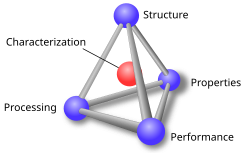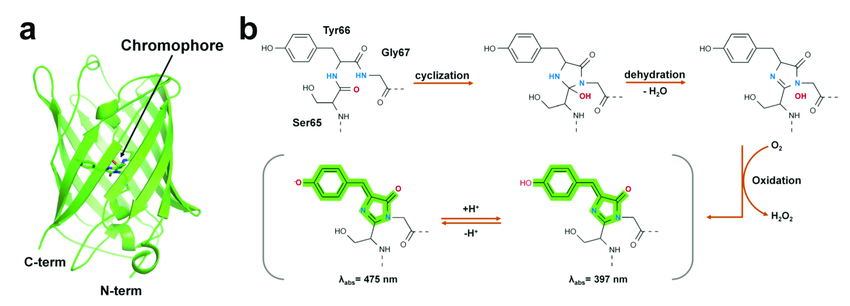Undrestanding Synthetic proteins
Synthetic proteins are artificially created molecules designed to mimic the structure and function of naturally occurring proteins. They are typically constructed using techniques from molecular biology and protein engineering
1. Introduction:
-Synthetic proteins are artificially created or modified proteins that are designed for specific functions or properties. They are important in various fields for several reasons:
-Medicine: Synthetic proteins can be designed to mimic natural proteins or to have entirely new functions. This opens up possibilities for developing novel therapies, such as targeted drug delivery systems, personalized medicine, and treatments for diseases like cancer.
-Biotechnology: In biotechnology, synthetic proteins are used to create enzymes with specific functions, such as breaking down pollutants or producing biofuels. They are also used in diagnostics, as markers for specific diseases, and in the production of biopharmaceuticals.
-Materials Science: Synthetic proteins can be engineered to have specific physical and chemical properties, making them useful in materials science. For example, they can be used to create biocompatible materials for medical implants or to develop new types of adhesives and coatings.
-Research: Synthetic proteins are valuable tools for studying protein structure and function. They can help researchers understand how natural proteins work and can be used to create models for testing new drugs and therapies.
-Synthetic proteins are created through protein engineering, which involves modifying or designing proteins with specific functions. This process often starts with designing the protein's amino acid sequence using computer algorithms.
The sequence is then synthesized using techniques like solid-phase peptide synthesis or recombinant DNA technology.
Next, the protein is expressed in a host organism, purified, and characterized to ensure it has the desired properties. These techniques from molecular biology are essential for creating synthetic proteins tailored for various applications in medicine, biotechnology, and materials science.

2.Design and Synthesis:
-Designing and synthesizing synthetic proteins involves several methods, two of which are rational design and directed evolution.
Rational design relies on computational tools and existing knowledge of protein structure-function relationships to design proteins with specific properties. This approach is effective for modifying known proteins or designing simple proteins with predictable structures.
Directed evolution, on the other hand, involves creating a diverse library of protein variants and selecting those with the desired function through iterative rounds of screening and selection. This method mimics natural selection and is useful for creating proteins with complex or novel functions that are difficult to design using rational methods. Both rational design and directed evolution are valuable tools in the field of synthetic biology, enabling the creation of proteins with tailored functions for various applications in medicine, biotechnology, and materials science.
--> These methods enable the creation of proteins with tailored functions for various applications.

3.Applications of synthetic proteins :
Synthetic proteins have a wide range of applications across various fields:
-Medicine: They can be used for drug delivery, as therapeutic agents, and in diagnostics. For example, synthetic proteins can be designed to target specific cells or tissues, making them valuable for targeted drug delivery in cancer therapy. They can also be engineered to mimic natural antibodies, offering new possibilities for diagnostic tests and therapies.
Synthetic insulin, used to treat diabetes, is a well-known example. It was developed to mimic the function of natural insulin. Another example is synthetic antibodies, such as adalimumab, used to treat autoimmune diseases like rheumatoid arthritis.

-Biotechnology: Synthetic proteins play a crucial role in enzyme engineering, where they are used to create enzymes with specific functions for industrial processes, such as biofuel production or the synthesis of pharmaceuticals. They are also used in biocatalysis, where they catalyze chemical reactions in a sustainable and environmentally friendly manner.
Engineered enzymes like lipases and proteases are widely used in industries such as food processing and detergent manufacturing. These enzymes are designed for specific functions, such as breaking down fats or proteins.

-Materials Science: Synthetic proteins can be used to create biocompatible materials for medical implants, tissue engineering, and drug delivery systems. They can also be used to develop new materials with specific properties, such as adhesives, coatings, and nanomaterials.

-Research: Synthetic proteins are valuable tools for studying protein structure and function. They can help researchers understand how natural proteins work and can be used to create models for testing new drugs and therapies. They are also used in basic research to study protein-protein interactions and protein folding.
Green fluorescent protein (GFP) is a synthetic protein originally derived from jellyfish. It is widely used as a marker in molecular and cell biology to study gene expression and protein localization in living cells.

4.Challenges and Future Directions:
a. Challenges:
Designing and synthesizing synthetic proteins pose challenges related to protein folding and stability.
Predicting the precise three-dimensional structure of a protein from its amino acid sequence is complex, as slight alterations in sequence can lead to significant changes in folding.
Ensuring that synthetic proteins fold correctly and maintain their structure over time is critical for their function.
Moreover, synthetic proteins may be more prone to misfolding, aggregation, or degradation than natural proteins, requiring careful design and engineering to overcome these challenges. Achieving the desired balance between stability and functionality remains a key hurdle in the field of synthetic protein design.
b. Future directions:
Future directions in synthetic protein research include the development of novel design strategies to overcome current challenges. This may involve refining computational tools for predicting protein structure and function, as well as exploring new methods for protein synthesis and modification.
Additionally, there is a growing interest in applying synthetic proteins in personalized medicine. By designing proteins that target specific molecular pathways or biomarkers, researchers aim to develop personalized therapies for conditions such as cancer and autoimmune diseases.
This approach could lead to more effective treatments with fewer side effects.
Overall, the future of synthetic protein research holds promise for advancing both basic science and clinical applications.
--> Synthetic proteins, created through protein engineering, offer immense potential across diverse fields. They can be designed with specific functions, such as targeted drug delivery, enzyme optimization, and material development.
--> Techniques like rational design and directed evolution enable the creation of tailored proteins.
--> Challenges include predicting protein folding and ensuring stability.
--> Despite these hurdles, synthetic proteins have already made an impact, exemplified by synthetic insulin and engineered enzymes. Future directions involve refining design strategies and applying synthetic proteins in personalized medicine, promising groundbreaking advancements in science and healthcare.
 Euro
Euro
 British Pound
British Pound
 US Dollar
US Dollar
